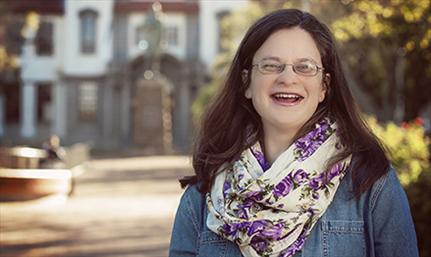|
 |
Dr Marieka Gryzenhout
Photo: Sonia Small
19 August 2013 |
Two lecturers in the Department of Plant Sciences received national recognition for their research at the Women in Science Award 2013 function of the Department of Science and Technology (DST) on Friday 16 August 2013. Dr Marieka Gryzenhout received the award as Young Women Scientist and Prof Maryke Labuschagne was first runner-up in the category Distinguished Women Researcher, both in Life Sciences.
The third award-winner was Rose Lekhooa in the Doctoral Fellowship category. She is studying toward a PhD in Pharmacology and said the fellowship will enable her to attend seminars and workshops internationally.
Friday’s award was the second, in as many months, for Dr Gryzenhout. She received the TW Kambule NRF-NSTF Award as emerging researcher in June 2013. She was the recipient of the International Union of Forestry Research Organizations’ Outstanding Doctoral Research award in 2010.
Prof Jonathan Jansen, Vice-Chancellor and Rector of the UFS, said, “Dr Gryzenhout represents one of a growing group of very impressive young scientists at the university who are emerging as leading international scholars in their fields.
“Her international leadership in mycology research has already made significant impacts on the African continent and beyond. The university will continue to invest in these young academic stars through its Prestige Scholars Programme where scholars like Dr Gryzenhout are increasingly well-placed to be the next generation of scientific leaders in the world.”
“It as a great privilege to receive the award, especially as second one in this year,” Dr Gryzenhout said. She established a research programme, Mycotoxigenic and Phytopathogenic Fungi, at the UFS. She is president of the African Mycological Association and general secretary of the International Society for Fungal Conservation. She is also a member of the Nomenclature Committee for Fungi – a permanent committee of the International Botanical Congress.
Prof Labuschagne received the African Union Kwame Nkrumah award for life and earth sciences in 2011, and the National Agriculturalist of the Year Award and the National Science and Technology Forum (NSTF) Award for research-capacity development over the last five to ten years, both in 2008.